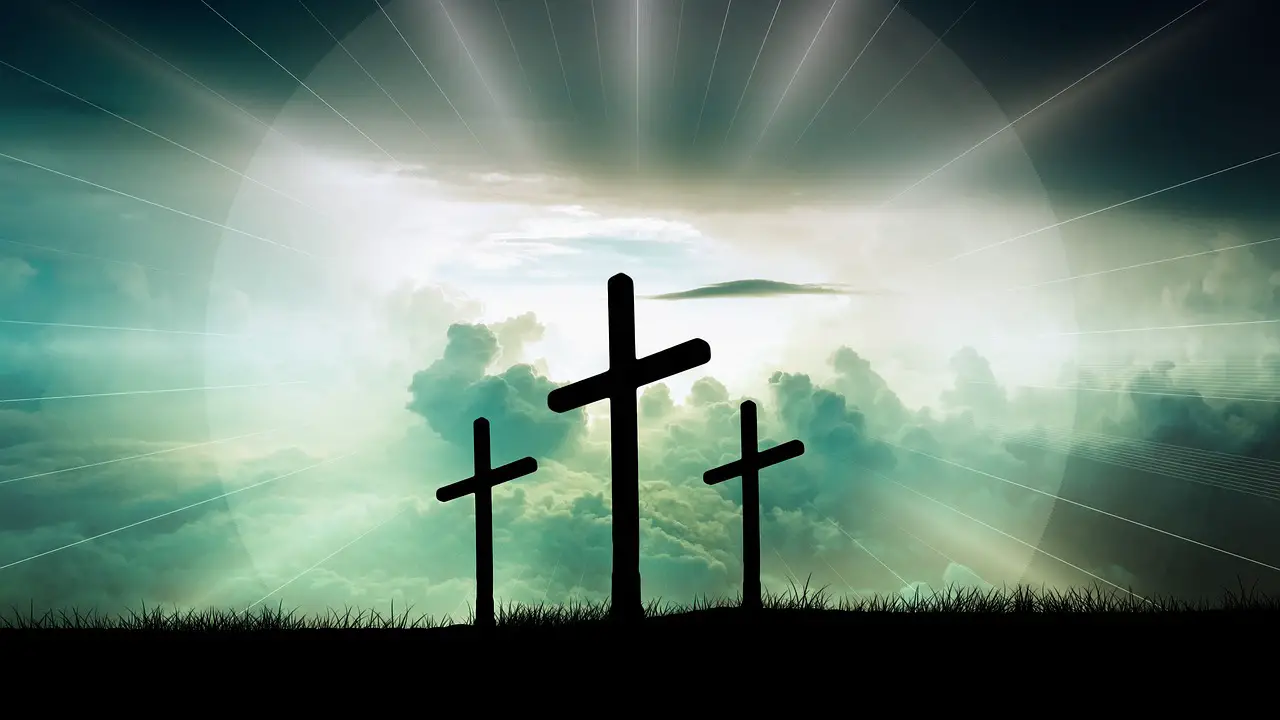“When the trees fall” symbolizes loss, change, and the impact of decisions on nature and humanity. It reflects the fragility of life and the interconnectedness of all living things, suggesting that significant events can lead to profound consequences in both the environment and within ourselves.
The phrase “when the trees fall” evokes vivid imagery that can be interpreted in various ways. Trees are often seen as symbols of life, growth, and stability. They provide shelter, oxygen, and resources. However, when they fall, they represent disruption and transformation. This metaphor resonates deeply in literature, art, and personal experiences, illustrating the complexities of change and the inevitability of loss.

In many cultures, trees hold significant symbolic value. For example, in some Indigenous traditions, trees are considered sacred beings. They are seen as guardians of knowledge and wisdom. When a tree falls in such contexts, it can signify not just physical loss but also the loss of cultural heritage or wisdom that is passed down through generations.
Symbolism of Trees in Different Contexts
The symbolism of trees extends far beyond their physical presence. Their meanings can vary based on cultural backgrounds, historical contexts, and personal interpretations. Here are some key symbolic aspects associated with trees:
- Life and Growth: Trees are often associated with life cycles, representing growth, strength, and resilience.
- Wisdom: Many cultures view trees as symbols of wisdom due to their longevity and stature.
- Connection: Trees serve as a metaphor for interconnectedness among living beings and ecosystems.
- Transformation: The seasonal changes in trees symbolize the cycles of life, death, and renewal.
The falling of a tree can thus be interpreted as a powerful event that disrupts these positive associations. It can signify a moment of crisis or change that affects not only the immediate environment but also the broader ecological or emotional landscape.

Moreover, in literature and poetry, the motif of falling trees often serves as a catalyst for character development or plot progression. It can represent a turning point where characters must confront their realities or make difficult choices. This literary device emphasizes the theme of inevitability and the consequences of actions taken or decisions made.
To delve deeper into the metaphorical implications of “when the trees fall,” it is essential to consider various interpretations that arise from different perspectives. Below is a table summarizing some interpretations:
| Interpretation | Description |
|---|---|
| Loss | The physical removal of trees symbolizes personal loss, whether it be loved ones or cherished memories. |
| Change | Falling trees represent inevitable change that alters one’s environment or circumstances. |
| Ecological Impact | The act of trees falling can symbolize environmental degradation and its cascading effects on ecosystems. |
| Emotional Turmoil | A metaphor for internal struggles or crises experienced by individuals facing significant life events. |
Understanding these interpretations allows for a richer appreciation of how this imagery resonates across various contexts. The metaphor encapsulates not just individual experiences but also collective cultural narratives about nature, loss, and resilience. As we explore further into this topic, we will uncover more layers of meaning associated with the symbolism of falling trees and how it shapes our understanding of life and the world around us.

The discussion surrounding “when the trees fall” urges us to reflect on our relationships with nature and each other. It challenges us to consider how we respond to loss and change in our lives and what it means for us as individuals and as part of a larger community. This exploration promises to lead to insights about our connections with the environment and the importance of nurturing those bonds.
The Psychological Impact of Loss
The metaphor of “when the trees fall” not only addresses environmental and cultural themes but also delves deeply into psychological aspects of loss and change. The act of losing something significant can lead to various emotional responses. Understanding these reactions can help individuals navigate their feelings more effectively.
When trees fall, they can symbolize the end of stability or security in one’s life. This can relate to various types of loss, including:

- Loss of Loved Ones: The death of a family member or friend can feel like a tree has fallen in one’s emotional landscape, creating a void.
- Loss of Identity: Major life changes, such as retirement or divorce, can uproot one’s sense of self, similar to how a tree’s fall disrupts its surroundings.
- Loss of Home: Natural disasters or personal circumstances that force an individual to leave their home can create feelings of instability akin to the destruction caused by fallen trees.
Each of these types of loss brings with it a unique set of emotional responses. Common feelings include grief, anger, confusion, and sometimes even relief. Recognizing these emotions as part of the healing process is crucial for recovery.
Coping Mechanisms in Response to Change
Understanding how to cope with the metaphorical falling of trees in our lives is essential for emotional well-being. Different strategies can help individuals manage their feelings during times of loss and change. Here are some effective coping mechanisms:
- Seeking Support: Engaging with friends, family, or support groups can provide comfort and understanding during difficult times.
- Expressing Feelings: Writing in a journal, creating art, or talking about feelings can help individuals process their emotions more clearly.
- Practicing Mindfulness: Techniques such as meditation or yoga can assist in grounding oneself and finding peace amidst turmoil.
- Establishing Routines: Maintaining daily routines can give a sense of normalcy and control when everything else feels chaotic.
Coping with the metaphorical falling of trees requires patience and self-compassion. It is important to allow oneself to grieve and acknowledge the impact of loss while also seeking pathways toward healing.
The Ecological Perspective on Change
Examining the ecological implications of “when the trees fall” opens up discussions about environmental stewardship and sustainability. The act of cutting down trees or experiencing natural phenomena that lead to tree falls raises essential questions about our relationship with nature.
Trees play vital roles in ecosystems, including:
- Carbon Sequestration: Trees absorb carbon dioxide, helping mitigate climate change.
- Biodiversity Support: Forests provide habitats for countless species, promoting biodiversity.
- Soil Protection: Tree roots stabilize soil and prevent erosion, maintaining land integrity.
The loss of trees can have cascading effects on these vital ecosystem services. For instance, deforestation not only impacts wildlife but also contributes to climate change, leading to further environmental degradation. Understanding these connections emphasizes the importance of sustainable practices and conservation efforts.
Literary Representations of Falling Trees
The imagery of falling trees frequently appears in literature, serving as a powerful metaphor for various themes such as loss, change, and the passage of time. Many authors have used this motif to evoke deep emotional responses and provoke thought about human experiences.
Some notable literary works featuring this theme include:
- The Giving Tree by Shel Silverstein: This story explores themes of selflessness and loss through the relationship between a boy and a tree.
- The Overstory by Richard Powers: This novel examines the lives of different characters intertwined with trees, illustrating how their fates are interconnected.
- The Lorax by Dr. Seuss: A cautionary tale about environmental degradation, it highlights the consequences of disregarding nature.
These works not only provide entertainment but also encourage readers to reflect on their own lives and relationships with nature. They illustrate how the symbolism of falling trees transcends mere imagery, inviting us to consider broader implications for humanity and the environment.
Falling Trees in Art and Culture
The metaphor of falling trees extends beyond literature into various forms of art and culture. Artists, musicians, and filmmakers often utilize this imagery to convey themes of loss, transformation, and the passage of time. By examining how different art forms interpret this symbolism, we can uncover deeper insights into human experiences.
Visual Arts
In visual arts, the depiction of trees and their fall can evoke a powerful emotional response. Artists often use contrasting colors and techniques to symbolize the life and death cycle inherent in nature. Some notable examples include:
- Vincent van Gogh: In works like “The Mulberry Tree,” van Gogh captures both the beauty and transience of nature, illustrating how trees serve as a metaphor for human emotions and experiences.
- Pablo Picasso: His painting “The Weeping Woman” can be interpreted as a representation of loss, using tree imagery to symbolize grief and suffering.
- Georgia O’Keeffe: In her paintings, O’Keeffe often portrays trees as symbols of strength and resilience, yet also as vulnerable beings that face the inevitable change.
These artists showcase how the symbolism of falling trees in visual arts can reflect broader themes related to human emotions and societal issues.
Music and Poetry
Music and poetry also harness the metaphor of falling trees to explore feelings of longing, loss, and change. Many songwriters and poets draw upon nature imagery to express complex emotions. For instance:
- Bob Dylan: In his song “Knockin’ on Heaven’s Door,” the imagery evokes a sense of waiting and the inevitability of death, akin to the falling of trees as a symbol of life’s fragility.
- Maya Angelou: Her poem “Still I Rise” incorporates nature imagery that symbolizes resilience against hardship, akin to trees that withstand storms but may eventually fall.
- Robert Frost: In “Birches,” Frost uses tree imagery to reflect on childhood innocence and the desire to escape from adult responsibilities, suggesting that falling trees can represent lost youth.
The use of such imagery in music and poetry allows listeners and readers to connect emotionally with themes of change and resilience.
The Role of Nature in Human Experience
The relationship between humans and nature is intricate and profound. The metaphor of falling trees speaks to this connection, emphasizing our dependence on the natural world. Several aspects highlight this relationship:
Environmental Awareness
As society becomes more aware of environmental issues, the symbolism of falling trees serves as a reminder of the consequences of neglecting nature. Deforestation, climate change, and habitat destruction illustrate how human actions directly impact ecosystems. Understanding this relationship can foster greater environmental stewardship.
- Climate Change: The loss of trees contributes significantly to rising carbon dioxide levels, which exacerbates global warming.
- Biodiversity Loss: When trees fall due to human intervention or natural disasters, countless species lose their habitats, leading to decreased biodiversity.
- Soil Erosion: Trees play a crucial role in maintaining soil health. Their absence can lead to erosion, impacting agriculture and land stability.
Cultural Significance
Cultures around the world often celebrate trees as symbols of life, wisdom, and community. The falling of trees in these contexts can signify profound cultural shifts or transitions. Some examples include:
- Celtic Traditions: In Celtic mythology, trees are revered as sacred beings. The felling of a tree can symbolize a loss of wisdom or cultural identity.
- Native American Beliefs: Many Indigenous cultures view trees as relatives or ancestors. Their destruction can represent a disconnect from heritage and ancestral teachings.
- Asian Cultures: In various Asian traditions, trees symbolize longevity and prosperity. A fallen tree can signify misfortune or loss in the community.
This cultural significance underscores how the metaphorical falling of trees resonates on multiple levels within societies, linking individual experiences to broader cultural narratives.
The Future: Restoration and Resilience
As we reflect on the symbolism of falling trees, it is essential to consider themes of restoration and resilience. Just as nature can regenerate after a tree falls, so too can individuals and communities find ways to heal and grow. Some strategies for fostering resilience include:
- Sustainable Practices: Engaging in reforestation efforts and promoting sustainable land use can help restore ecosystems affected by human activities.
- Cultural Revival: Revitalizing traditional practices related to nature can strengthen community bonds and reconnect people with their cultural heritage.
- Emotional Healing: Encouraging open discussions about grief and loss can help individuals process their emotions more effectively, fostering personal resilience.
By understanding the metaphor of falling trees through these lenses, we can appreciate the importance of nurturing our relationships with nature and each other while recognizing our capacity for renewal amid change.
As we contemplate the metaphor of “when the trees fall,” it is essential to recognize that this imagery holds multifaceted meanings that resonate deeply within individuals and communities alike. The symbolism encapsulates a myriad of experiences, from personal loss to ecological destruction, each carrying profound implications for our emotional and societal landscapes.
In exploring the psychological impacts of loss, we find that acknowledging our emotions and engaging in coping strategies can facilitate healing. By seeking support from loved ones or utilizing creative outlets, individuals can navigate their grief and emerge stronger. This journey is not just personal; it reverberates through communities that experience collective loss, emphasizing the importance of communal resilience.
The ecological perspective on the falling of trees reminds us of our responsibility towards nature. As stewards of the environment, we must recognize the interconnectedness of all living beings. The act of preserving forests and promoting sustainable practices not only benefits ecosystems but also reflects our commitment to future generations. Every tree that stands represents potential life; every tree that falls symbolizes an opportunity for regeneration.
Culturally, the metaphor extends into various traditions and arts, enriching our understanding of what it means to coexist with nature. From literature to visual arts, the portrayal of trees—both standing and fallen—invites us to ponder our place within the broader narrative of existence. These artistic expressions challenge us to reflect on our values, our connections to heritage, and our aspirations for the future.
Moreover, the discussion around restoration and resilience highlights a crucial truth: even after significant loss or change, there exists a pathway to renewal. Just as nature has an incredible ability to heal itself, humans too possess the strength to rebuild and thrive in the aftermath of adversity. This resilience can be cultivated through community engagement, cultural revitalization, and emotional support systems.
Final Thoughts
In summary, the metaphor of “when the trees fall” serves as a powerful reminder of the complexities inherent in life. It encapsulates themes of loss, change, and resilience, urging us to reflect on our relationships with nature and each other. The imagery encourages us to confront difficult emotions while also inspiring hope for renewal and growth.
As we navigate our own challenges, we can draw strength from the knowledge that falling trees—whether in our lives or in nature—are not just symbols of despair but also indicators of transformation. They remind us that every ending carries the seed of a new beginning. Through sustainable practices, cultural revival, and emotional healing, we can foster an environment where both people and nature flourish together.
Ultimately, embracing this metaphor invites us to cultivate a deeper appreciation for life’s fragility and beauty. It empowers us to take meaningful actions that honor both our emotional journeys and our responsibility toward the environment. By nurturing our connections with one another and with nature, we can create a tapestry of resilience that celebrates life in all its forms.
